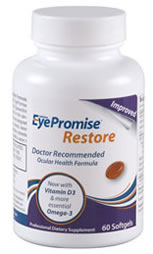
AMD Awareness
Did you know that Age-Related Macular Degeneration (AMD) destroys central vision, is the leading cause of severe vision loss in adults over age 55, and currently affects approximately 15 million people? Due to the aging Baby Boomer population, the incidence of AMD is expected to triple by 2025. While there is no cure for AMD, and its effects are irreversible, there are both modifiable and non-modifiable risks.
Non-Modifiable Risk Factors for AMD:
- Family History
- Smoking (past or present)
- Age
Modifiable Risk Factors:
- Low Macular Pigment
- Light colored skin and eyes
- Unprotected exposure to the sun
- Gender – females are more at risk
- Obesity
- Poor diet
Our practice offers MPOD testing – Macular Pigment Optical Density, which measures the density or thickness of your macular pigment. As a modifiable risk factor, you can help manage AMD risks including low macular pigment. Call 309-266-8881 to make an appointment for an MPOD exam – it’s fast, safe, and affordable.
Enhancing and protecting vision with “internal sunglasses”
As we age, the quality of our vision can change, and for most of us that entails wearing glasses, contacts or maybe even undergoing surgical procedures. But did you know that your vision can improve through nutrition and supplementation?
The back of the eye contains a film called macular pigment. This film is made up of two pigments: zeaxanthin (zee-uh-zan-thin) and lutein (loo-teen). These macular pigments function like “internal sunglasses” that protect and enhance vision. The beautiful thing about internal sunglasses is that you can build them by eating a lot of the right fruits and vegetables or by supplementing your diet with eye vitamins.
Thicker macular pigment offers protection of the photoreceptors that are responsible for vision.– Remember in science class when you learned about rods and cones? Rods are responsible for peripheral vision, and cones are responsible for central vision. Unfortunately, harmful blue light comprises visible light waves that can damage these photoreceptors in the back of the eye, as opposed to the ultra-violet (UV) range of the light spectrum, which can affect the cornea, or the front of the eye. And even though the eye contains millions of rods and cones, they don’t replenish themselves once they die. So, it is smart to be proactive about healthy vision and protect what you already have.
Dense macular pigment can also improve your vision – from driving a car to reading to playing tennis. Science supports that higher amounts of zeaxanthin and lutein can improve the ability to see fine details, decrease sensitivity to bright light, increase recovery time from glare and enhance contrast sensitivity – the ability to see objects that may not be outlined or stand out clearly from the background. Contrast sensitivity declines with age – this important function helps people clearly recognize steps and other obstacles. Improving this condition alone becomes very important as one-third to one-half of the elder population falls at least once per year, and the risk of falling increases with age.
Baby boomers are aging at a rapid pace, but the way they are aging is unprecedented. Older Americans are working longer, staying more active, engaging in more hobbies and interests and value their independence like no generation before them. So, if you have difficulty adjusting to bright light, reading in dim light or driving a car at night, increasing your macular pigment or internal sunglasses might be just what the doctor ordered – literally.
Eight milligrams of dietary zeaxanthin per day improved vision in 60 veterans with early Age-related Macular Degeneration (AMD), according to Stuart Richer, a doctor of optometry and leading expert on nutrition and eye health, who recently published the results in the Zeaxanthin and Visual Function (ZVF) Trial, and follow-up clinical paper, “Macular Re-pigmentation Enhances Driving Vision in Elderly Adult Males with Macular Degeneration.” These patients experienced an 8.5 letter improvement on an eye chart, improved ability to discern between shapes, blind spots were eliminated and a significant percentage experienced improved driving vision.
While lutein is readily available in many fruits and vegetables, zeaxanthin is much more difficult to obtain in the average U.S. daily diet. Zeaxanthin is found at a natural two-to-one ratio to lutein in the center of the macula (the fovea) where the cones responsible for central vision are located. To protect and enhance these photoreceptors, macular pigment can be increased through eating vegetables like kale and corn, but currently less than 10 percent of calories on average are derived from fruits and vegetables for Americans while the recommended amount is 50 percent. One would have to consume approximately 20 ears of corn per day to equal the amount of dietary zeaxanthin found in supplements like the EyePromise brand of nutraceuticals.
Next time you experience discomfort from night driving, bright light, reading in dim light or an activity that encompasses fine detail, think about your internal sunglasses. Zeaxanthin and lutein make up your macular pigment, so give your eyes what they need most through a diet rich in fruits and vegetables including spinach, kale, corn and peppers. If you cannot consume enough fruits and vegetables, consider taking an all natural supplement containing high levels of dietary zeaxanthin and lutein.
Why would this test and/or vitamins be beneficial for me?
Low Macular Pigment and AMD:
EyePromise Restore rebuilds macular pigment, a key risk factor of Age-related Macular Degeneration (AMD), the leading cause of blindness of over age 55 affecting more than 15 million people. AMD destroys central vision, has no cure, and is irreversible.
Natural 2:1 Ratio of Zeaxantin to Lutein
There is a natural 2:1 ratio in the fovea, which is in the center of macula in the back of your eye. Studies show that 2 EyePromise Restore can increase macular pigment up to 54%. Zeaxanthin is very difficult to get through the average US diet, and 1 Restore softgel has the same amount of Zeaxanthin as approximately 20 ears of corn!

